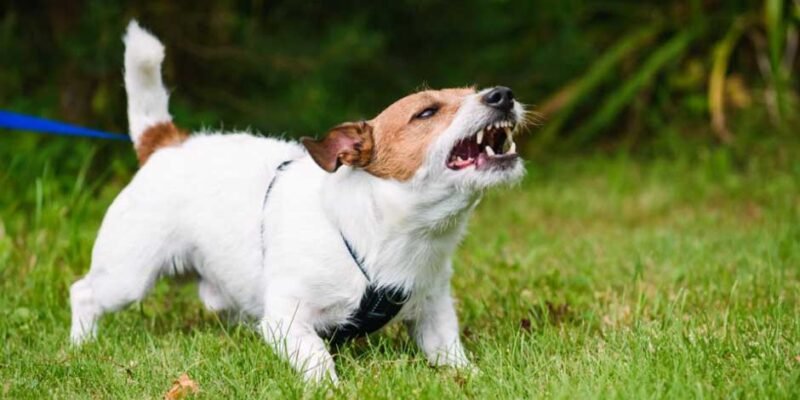As dog owners, it is essential to understand and interpret the behavior of our furry companions. While aggression in dogs is relatively rare, it is crucial to be aware of the warning signs that a dog might display when feeling threatened or agitated. By recognizing these signals, individuals can take appropriate precautions and avoid potential aggression incidents. As you continue reading and exploring this article, we will discuss seven common signals that indicate a dog may be on the verge of attacking. So, without further delay, let’s get into it.
Direct Stare or Fixated Gaze
One of the primary ways of decoding dog attack signals is by noticing an intense, direct stare or a fixated gaze. When a dog feels threatened or protective, it tends to lock its gaze on the perceived threat or target. Its body becomes tense, and its focus narrows in anticipation of taking action. If you find yourself facing a dog with an unwavering stare, it’s best to back away slowly without making any sudden movements to avoid escalating the situation further.
Raised Hackles
Raised hackles, known as “piloerection,” occur when the hairs along a dog’s back and neck stand on end. This visible physiological response often indicates fear, anxiety, or increased arousal levels in dogs—all potential precursors to aggression. If you notice raised hackles in conjunction with other warning signs mentioned in this article, make sure to give the dog space and avoid any actions that could provoke an attack.
Growling or Snarling
Growling and snarling are clear auditory cues that communicate a dog’s displeasure or irritation with their current circumstances. Dogs use vocalizations like growls and snarls as warning signals before resorting to physical confrontation. It’s important for individuals encountering such behavior not to provoke the animal further by making direct eye contact or sudden movements.
Bared Teeth
When a dog bares its teeth by retracting its lips and displaying its incisors prominently, it is a compelling sign of aggression. The display of teeth serves as a visual threat, indicating that the dog is prepared to escalate its behavior. If faced with such a situation, it’s advisable to remain calm and slowly distance yourself from the dog without turning your back.
Stiff Body Language
An aggressive dog’s body language often becomes rigid and stiff to indicate dominance or readiness to fight. Its muscles tense up as it prepares to launch into an attack. Common signs of a dog in this state include stiff legs, a locked, rigid tail either held out straight towards its target or tucked under its body and an overall lack of fluid movement. Recognizing these cues enables individuals to disengage calmly and prevent any incidents from unfolding.
Prolonged Licking or Yawning
While we often associate licking with affectionate behavior, excessive or prolonged licking in stressful situations can serve as displacement behavior, indicating unease or anxiety. Excessive yawning can also occur simultaneously, again as a coping mechanism employed by the dog during high-stress situations that could potentially escalate into aggression.
Raised Body Posture
When confronted with intimidation or perceived threats, dogs may raise their bodies higher off the ground by standing on their tiptoes (hindquarters lifted) with a forward-leaning posture—almost threateningly mimicking people’s upright stance when they get into confrontation mode. This body language illustrates an intense desire for control over the situation and shows that the potential for aggression is present.
Conclusion
By familiarizing yourself with these seven signals that may indicate impending dog aggression—direct stare or fixated gaze, raised hackles, growling or snarling, bared teeth, stiff body language, prolonged licking or yawning—you can protect yourself and others while better understanding our beloved canine friends.
Remember that each dog has different triggers and temperaments; therefore, cautious observation combined with respecting their boundaries is imperative. When in doubt, consult with a professional dog trainer to ensure a safe and enjoyable relationship with your pets and those you encounter.














Comments